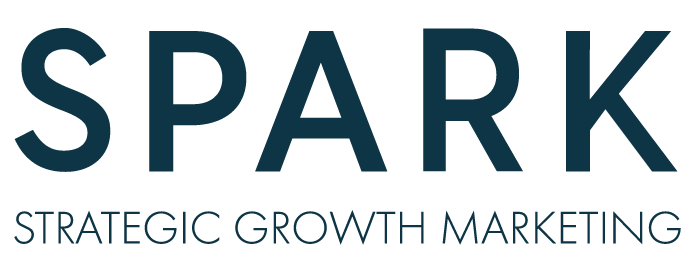As a business owner, you know that standing out from the competition is key to success. But how can you differentiate yourself from others in your industry? One way is to use a framework to help you establish your differentiation. Here are five frameworks you can use to do just that:
Value Proposition Canvas
The Value Proposition Canvas is a framework that helps you understand your customers’ needs and create a unique value proposition to address those needs. The framework is divided into two parts: the customer profile and the value map.
The customer profile helps you understand your customers’ jobs, pains, and gains. In other words, what are their needs, frustrations, and desires? This information is essential for creating a value proposition that addresses their specific needs.
The value map, on the other hand, helps you create a unique value proposition that addresses the needs of your target customers. This involves identifying the products and services that you offer and how they solve your customers’ problems, reduce their pain points, or provide them with gains.
Using the Value Proposition Canvas can help you create a unique value proposition that sets you apart from your competitors. By addressing the specific needs of your customers, you can create a value proposition that resonates with them and helps you stand out in the marketplace.
Blue Ocean Strategy
The Blue Ocean Strategy is a framework that encourages businesses to identify and create uncontested market space, thereby making the competition irrelevant. The framework is based on the idea that businesses can achieve high growth and profits by creating new demand in a market that is not yet served.
The Blue Ocean Strategy is divided into two parts: the value curve and the strategy canvas.
The value curve helps you understand how your business compares to others in your industry. By analyzing the key factors that your customers value, you can identify areas where you can differentiate yourself and create a unique value proposition.
The strategy canvas, on the other hand, helps you create a new market space by identifying the key factors that your customers value and developing a strategy that meets those needs.
Using the Blue Ocean Strategy can help you create a unique value proposition that is not currently offered in your industry. By creating a new market space, you can differentiate yourself from your competitors and achieve high growth and profits.
Porter’s Generic Strategies
Porter’s Generic Strategies is a framework that provides businesses with three generic strategies to choose from: cost leadership, differentiation, and focus. The framework is based on the idea that businesses can achieve a competitive advantage by choosing a strategy that fits their strengths and the needs of their customers.
Cost leadership involves achieving the lowest cost of production and distribution in your industry. This allows you to offer products or services at a lower price than your competitors, which can help you capture a larger market share.
Differentiation involves creating a unique value proposition that sets you apart from your competitors. This can involve offering higher quality products or services, a better customer experience, or other factors that your customers value.
Focus involves targeting a specific segment of the market and offering products or services that meet their specific needs. This can involve targeting a specific geographic area, demographic group, or industry.
Using Porter’s Generic Strategies can help you choose a strategy that fits your strengths and the needs of your customers. By choosing a strategy that sets you apart from your competitors, you can achieve a competitive advantage and stand out in the marketplace.
Ansoff Matrix
The Ansoff Matrix is a framework that helps businesses identify new growth opportunities by analyzing their existing product-market combinations and considering new ones. The framework is divided into four parts: market penetration, market development, product development, and diversification.
Market penetration involves increasing sales of existing products in existing markets. This can involve increasing market capacity, improving distribution channels, or increasing promotional activities.
Market development involves introducing existing products to new markets. This can involve expanding geographically, targeting new demographic groups, or targeting new industry segments.
Product development involves creating new products for existing markets. This can involve creating new variations of existing products, improving existing products, or creating entirely new products.
Diversification involves entering new markets with new products. This can involve expanding into new industries or creating entirely new products for new markets.
Using the Ansoff Matrix can help you identify growth opportunities and choose a strategy that fits your strengths and the needs of your customers. By considering new product-market combinations, you can differentiate yourself from your competitors and achieve growth in new areas.
Business Model Canvas
The Business Model Canvas is a framework that helps businesses develop a comprehensive business model that includes their value proposition, target customer segments, revenue streams, cost structure, and more. The framework is divided into nine parts: customer segments, value proposition, channels, customer relationships, revenue streams, key resources, key activities, key partnerships, and cost structure.
The customer segments part helps you identify the specific groups of customers that you want to target. The value proposition part helps you create a unique value proposition that addresses the needs of your target customers.
The channels part helps you identify the specific channels that you will use to reach your customers. The customer relationships part helps you identify the types of relationships that you want to have with your customers.
The revenue streams part helps you identify the specific sources of revenue for your business. The key resources part helps you identify the specific resources that you need to create and deliver your value proposition.
The key activities part helps you identify the specific activities that you need to perform to create and deliver your value proposition. The key partnerships part helps you identify the specific partnerships that you need to create and maintain to achieve your business goals.
The cost structure part helps you identify the specific costs associated with creating and delivering your value proposition. Using the Business Model Canvas can help you develop a comprehensive business model that addresses all aspects of your business and helps you differentiate yourself from your competitors.
Conclusion
There are several frameworks that businesses can use to establish their differentiation. The Value Proposition Canvas can help you create a unique value proposition that addresses the specific needs of your customers. The Blue Ocean Strategy can help you create a new market space and achieve high growth and profits. Porter’s Generic Strategies can help you choose a strategy that fits your strengths and the needs of your customers. The Ansoff Matrix can help you identify growth opportunities and choose a strategy that sets you apart from your competitors. Finally, the Business Model Canvas can help you develop a comprehensive business model that addresses all aspects of your business and helps you differentiate yourself from your competitors. By using these frameworks, you can establish your differentiation and achieve success in your industry.
Author
-

Russell has a passion for global strategy, innovation, and ideas that move the world forward. He has spent his career working with businesses in more than 30 countries, building programs that focus on growth and value innovation. Russell focuses his time working with business leaders to understand, challenge, and unlock the value they have for the world, using marketing and insights to help them reach their vision.
View all posts
